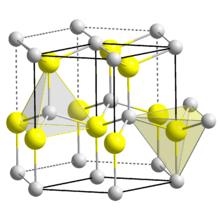Properties of Aluminum Nitride

Aluminum Nitride is a chemical which does not occur naturally but synthesized from the elements aluminum and nitrogen. Aluminum Nitride is a covalent bonded chemical and has a hexagonal crystal structure.
Applications of Aluminum Nitride Nanoparticles/Nanopowder

Aluminum Nitride has high thermal conductivity and high electrical resistivity. The thermal expansion coefficient of Aluminum Nitride close to Silicon. These properties of Aluminum Nitride powder make it suitable for the applications in electronic devices, optical devices, and in composites. Aluminum Nitride is used in manufacturing of integrated circuit boards. Aluminum Nitride is a very good chemical to be used in the fabrication of metal matrix and polymer matrix composites that is used in heat seal adhesives and electronic packaging materials. Aluminum Nitride is used for making high thermally conductive ceramics, high temperature crucibles, heat sinks, and thermally conductive filler for polymers.
Technical Properties of Our Aluminum Nitride (AlN) 99.95%, 790 nm, Hexagonal Product
| Purity (%) | 99.95 |
| AVERAGE PARTICLE SIZE (nm): | 790 |
| Color | gray |
| Zeta Potential (mV) | 45.0 |
| Thermal Conductivity (w/mk) | 320 |
| Thermal Expansion Coefficient (K-1) | 3.5 × 10-6 |
| Manifucturing Method | physical methods |
You may reach Aluminum Nitride (AlN) 99.95%, 790 nm, Hexagonal by clicking the link given below:
Technical Properties of Our Aluminum Nitride (AlN) Nanoparticles/Nanopowder, 99.95%, 60-70 nm, Hexagonal Product
| Purity (%) | 99.95 |
| AVERAGE PARTICLE SIZE (nm): | 60-70 |
| Color | gray |
| Bulk Density (g/cm3) | 0.05 |
| Zeta Potential (mV) | 45.0 |
| Thermal Conductivity (w/mk) | 320 |
| Thermal Expansion Coefficient (K-1) | 3.5 × 10-6 |
| Manifucturing Method | physical methods |
You may reach Aluminum Nitride (AlN) Nanoparticles/Nanopowder, 99.95%, 60-70 nm, Hexagonal by clicking the link given below:
Comments
Post a Comment